Victoria R: the “first media monarch” of modern Britain
The Library’s Special Collections has recently acquired ten cartes de visite depicting members of the British royal family in the 1860s. Queen Victoria and Prince Albert feature prominently, but they do not appear together in any of these cartes as they had frequently done prior to Albert’s unexpected death in 1861. With the news of his death, the public appetite for his portrait was vast. The carte de visite format – small albumen prints attached to 9 x 6 cm mounts – had only recently been introduced from France, but it was the middle-class market for cheap portraits of Albert that helped establish the format’s popularity in Britain.
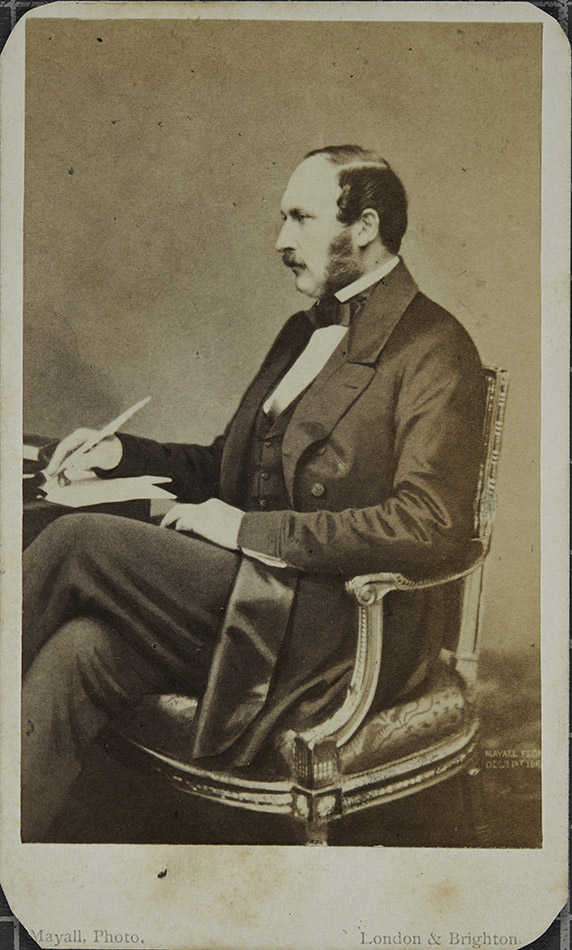
In three of these cartes, Albert’s portrait derives from the same glass negative by John Jabez Edwin Mayall, a renowned studio photographer then based at Regent Street in London. Like other commercial photographers of the time, royal patronage was a highly prized means of advertising a studio’s work. In the first of these cartes, Albert sits at a desk with quill in hand, temporarily pausing from the letter before him. While the correspondence may be personal in nature, Albert was well known for his tireless public service. The writing implements before him therefore remind the viewer of his public duties in life and the degree of his loss in death.
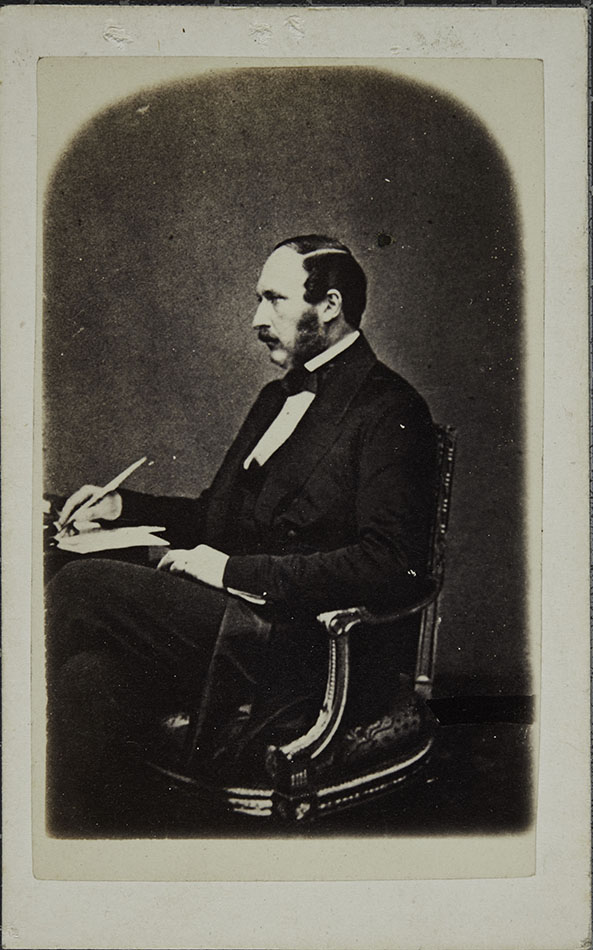
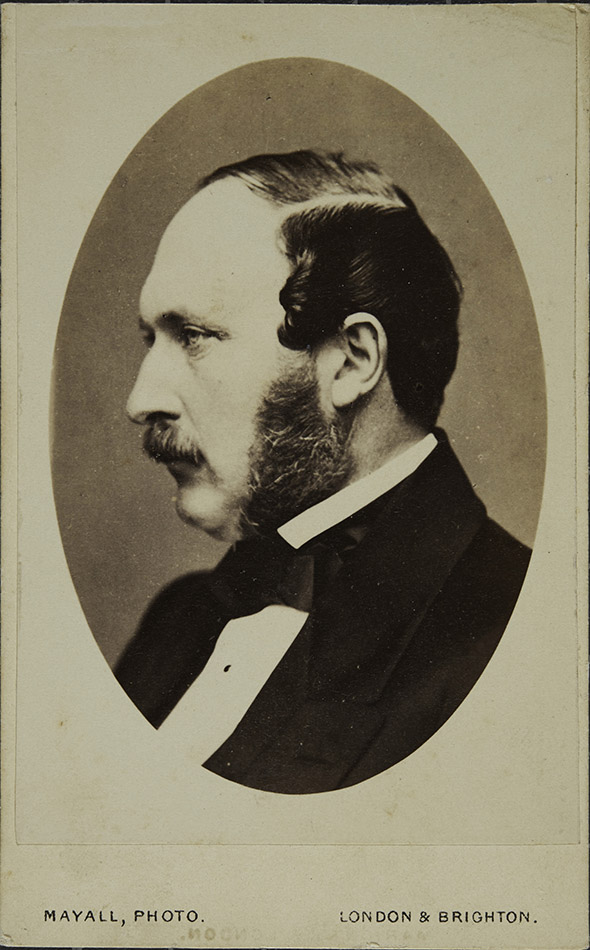
In the second copy print, Mayall’s name has been carefully blacked out from the lower right hand corner of the photograph. Along with the loss of tonal quality and detail, the slight change in scale, and the lack of any other identification, this carte appears to be one of the innumerable pirated copies that were sold without permission. It was the complaints of the foremost studio photographers against such widespread piracies that led to changes in copyright legislation (and indeed, several cartes in this group have printed on their mounts either ‘copyright’ or ‘registered’). Unlike the first two versions, Albert’s third carte is a close-up profile portrait in a rondelle, reminiscent in style of a classical cameo but still clearly taken at the same sitting, if not derived from the same glass negative.
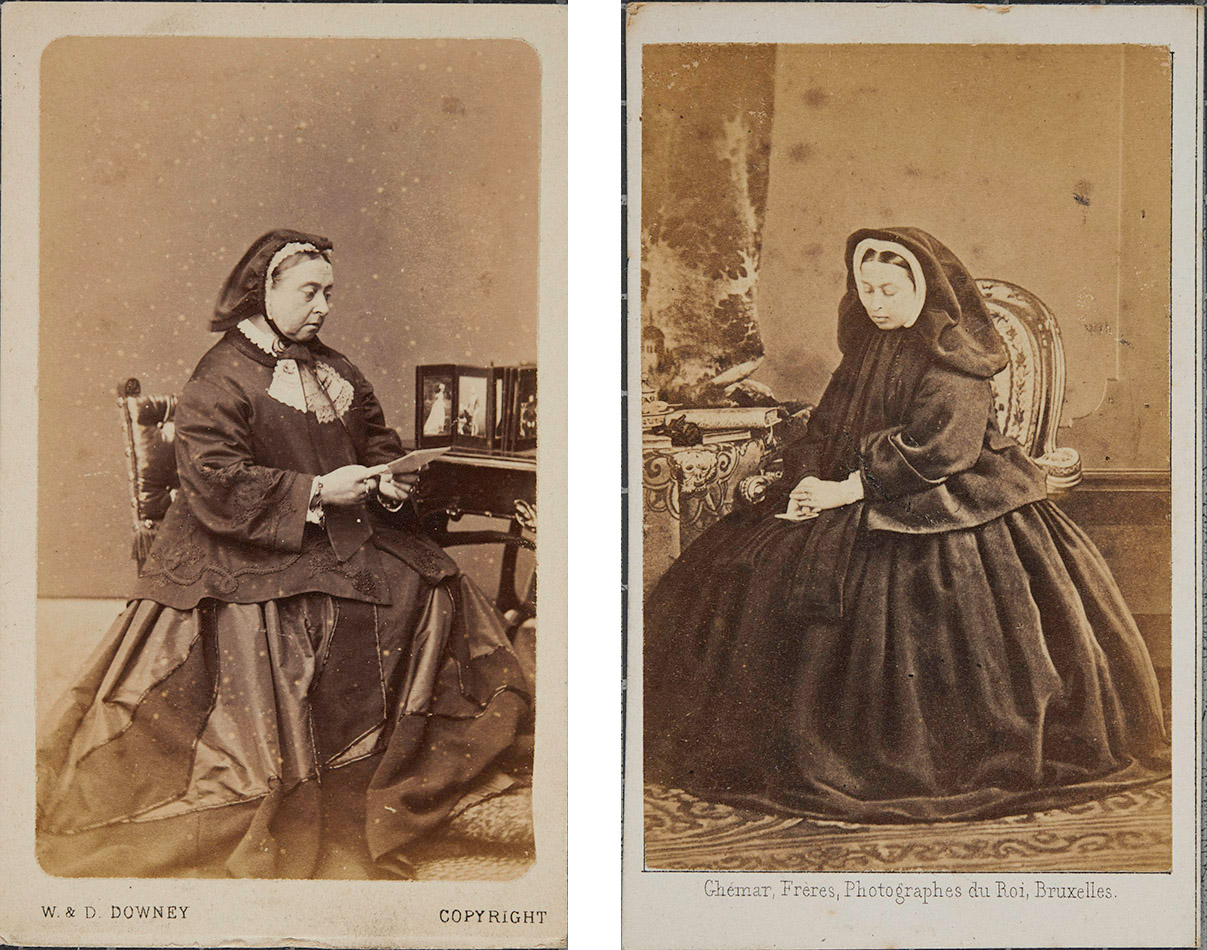
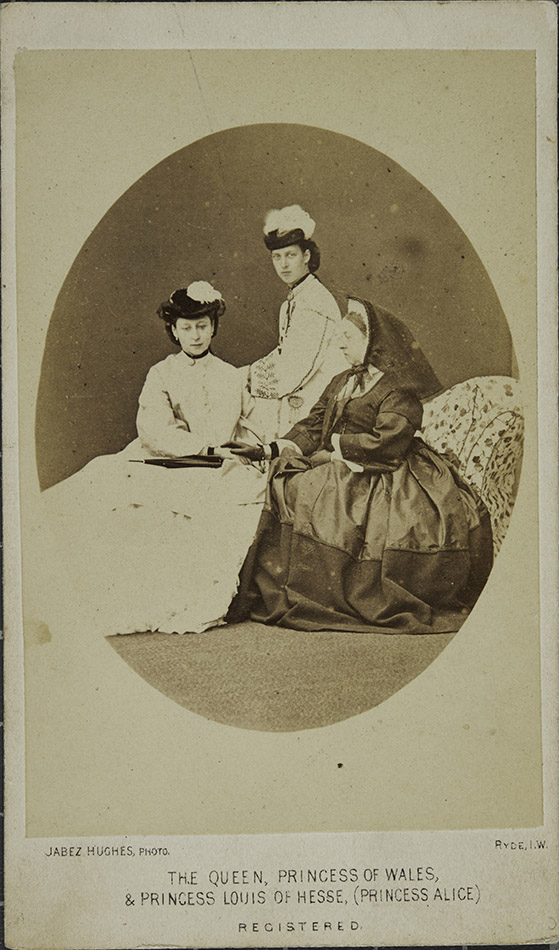
Whereas Prince Albert’s portrait photographs were commissioned in life but reprinted and sold after his death, Queen Victoria’s cartes date from widowhood as is evident in her bereavement attire. In two cartes, respectively by W. & D. Downey of Newcastle on Tyne and Ghémar frères of Brussels, Victoria holds a photograph in her hand with her eyes cast downwards in apparent contemplation. This self-referential visual language, of photographs within photographs, was a common feature of Victorian-era portrait photography, often associated with absent or departed loved ones. But if Victoria’s portraits alone, dressed in black and holding photographs in mute contemplation, reinforced the public perception of her inconsolable grief, a more upbeat message of royal lineage and continuity is implied in a group portrait by the photographer Jabez Hughes. Here, Victoria is seated in profile with her daughter Princess Louise of Hesse (Princess Alice) and daughter-in-law, the Princess of Wales, Alexandra of Denmark. Whereas Queen Victoria was immediately recognisable in her dark costume, the two princesses are dressed in bright crinolines with fashionable, even ostentatious, hats. The triangular arrangement of the three sitters suggests stability and order, and the simple gesture of holding hands implies familial intimacy between generations. The same distinctive couch on the right is also apparent in another carte by Jabez Hughes – in this case, of Queen Victoria seated with an infant child on her knee.
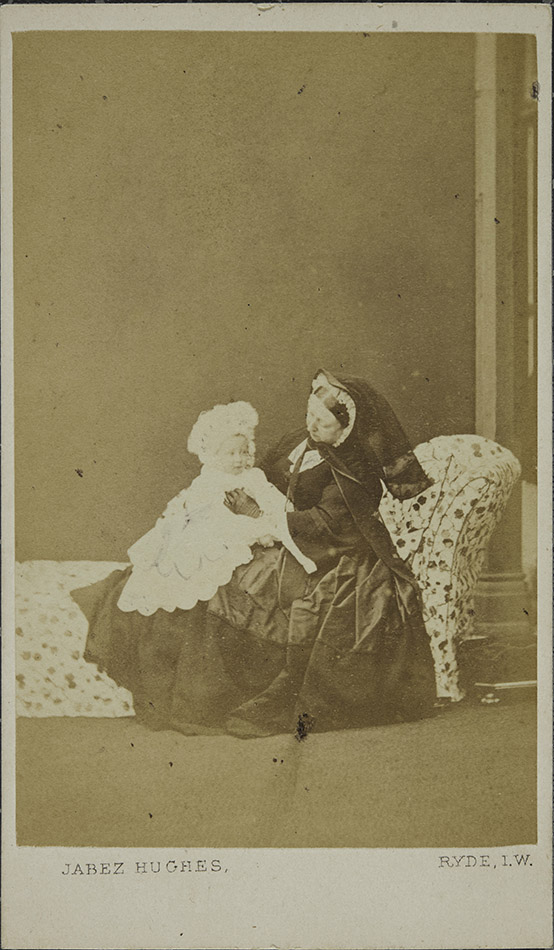
These ten cartes de visite demonstrate the extraordinary rise in popularity of this format in Victorian Britain and the close relationship between commercial photographers and the royal family in the nineteenth century. They exemplify the role of photography in Queen Victoria’s public image as, in the evocative phrase of John Plunkett, the “first media monarch” of modern Britain.
Luke Gartlan
School of Art History
When did the change in copyright legislation come about? I have a few carte de visite that have been passed down through the family & this might help in dating them.
Thank you for your question. This is actually quite a complicated question. The short answer, however, is 1862 (and so soon after Prince Albert's death) when Parliament passed the Fine Arts Copyright Act. To ensure protection under this Act, photographers had to register their works at Stationers' Hall for a small fee. As such, not all photographs were copyrighted and all one can say of cartes with a copyright mark is that they date from 1862. However, the situation for photographers in other countries varies widely. Luke Gartlan.